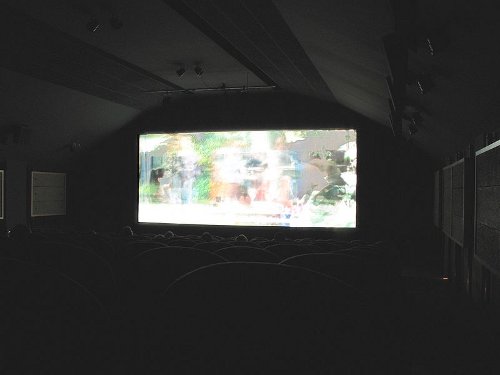
Groucho Marx hated Harry Cohn, a producer for Columbia.
At one showing, when the words “Columbia Pictures Presents” appeared on the screen, he turned to Chico and said, “Drags, doesn’t it?”

Groucho Marx hated Harry Cohn, a producer for Columbia.
At one showing, when the words “Columbia Pictures Presents” appeared on the screen, he turned to Chico and said, “Drags, doesn’t it?”
As the computer HAL is being shut down in 2001: A Space Odyssey, it begins singing the song “Daisy Bell”:
Daisy, Daisy, give me your answer do,
I’m half crazy, all for the love of you.
It won’t be a stylish marriage–
I can’t afford a carriage–
But you’ll look sweet upon the seat
Of a bicycle built for two.
That’s poetic, in a way. During a visit to Bell Labs in 1961, novelist Arthur C. Clarke had witnessed the first singing computer — physicist John Kelly had programmed an IBM 704 to sing using a speech synthesizer.
The song it sang was “Daisy Bell.”
Robert Altman’s 1992 film The Player opens with a tracking shot — one continuous take that lasts nearly 8 minutes.
The filmmakers shot 15 takes, and Altman used take 10 — you can see the slate at the very beginning of this clip.
Alfred Hitchcock planned to shoot his 1948 film Rope in one enormous take, but his cameras would hold only 1,000 feet of film. As it is, the 80-minute film contains only 11 takes.
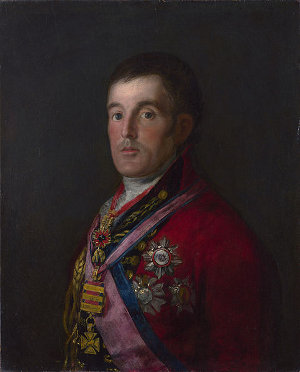
This is Francisco Goya’s painting Portrait of the Duke of Wellington.
In 1961 it was stolen from the National Gallery in London.
In 1962 it turned up again — it hangs in Dr. No’s lair in the first James Bond film.
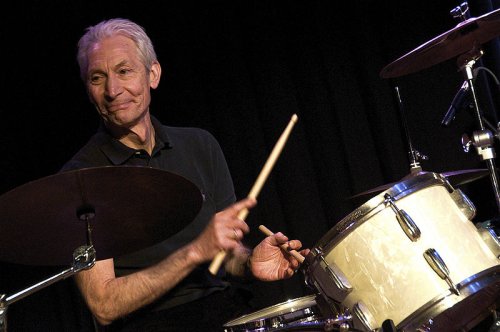
Charlie Watts draws beds. “I make a sketch of every bedroom I sleep in,” he told an interviewer in 1998. “I’ve sketched every bed I’ve slept in on tour since about 1968.”
“It’s a diary,” he told Sue Lawley in 2001. “Now I can’t miss one because it’s like ruining ‘a day in the life of.’ So I just draw every bed that I sleep in when I tour with the Rolling Stones.”
What’s unusual about this position, by Adamson?
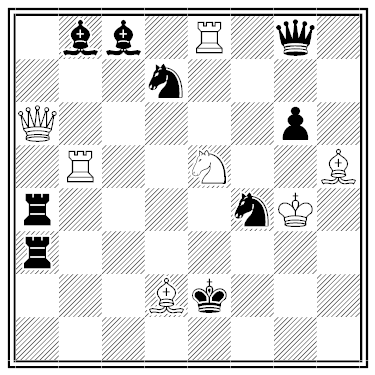
Ten discovered checks in a row:
1. Rb2+ Nd3+ 2. Nc4+ N7e5+ 3. Kg3+ gxh5+ 4. Bg5+ Nxb2+ 5. Ne3+ Ned3+
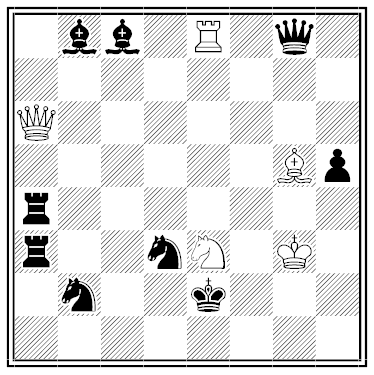
Marcel Duchamp described chess as “the movement of pieces eating one another.”
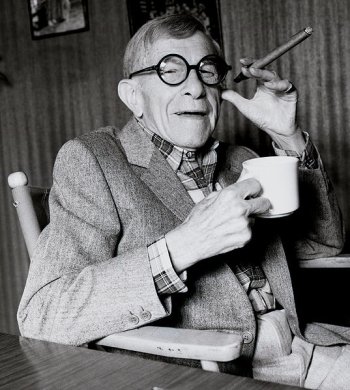
George Burns made no movies between Honolulu in 1939 and The Sunshine Boys in 1975.
When Esquire asked why, he said, “My agent was afraid of overexposure.”
In deciding the 1972 case Flood v. Kuhn, which challenged the reserve clause in baseball players’ contracts, Justice Harry Blackmun waxed a bit rhapsodic, listing the players whom he felt deserved immortality:
Then there are the many names, celebrated for one reason or another, that have sparked the diamond and its environs and that have provided tinder for recaptured thrills, for reminiscence and comparisons, and for conversation and anticipation in-season and off-season: Ty Cobb, Babe Ruth, Tris Speaker, Walter Johnson, Henry Chadwick, Eddie Collins, Lou Gehrig, Grover Cleveland Alexander, Rogers Hornsby, Harry Hooper, Goose Goslin, Jackie Robinson, Honus Wagner, Joe McCarthy, John McGraw, Deacon Phillippe, Rube Marquard, Christy Mathewson, Tommy Leach, Big Ed Delahanty, Davy Jones, Germany Schaefer, King Kelly, Big Dan Brouthers, Wahoo Sam Crawford, Wee Willie Keeler, Big Ed Walsh, Jimmy Austin, Fred Snodgrass, Satchel Paige, Hugh Jennings, Fred Merkle, Iron Man McGinnity, Three-Finger Brown, Harry and Stan Coveleski, Connie Mack, Al Bridwell, Red Ruffing, Amos Rusie, Cy Young, Smoky Joe Wood, Chief Meyers, Chief Bender, Bill Klem, Hans Lobert, Johnny Evers, Joe Tinker, Roy Campanella, Miller Huggins, Rube Bressler, Dazzy Vance, Edd Roush, Bill Wambsganss, Clark Griffith, Branch Rickey, Frank Chance, Cap Anson, Nap Lajoie, Sad Sam Jones, Bob O’Farrell, Lefty O’Doul, Bobby Veach, Willie Kamm, Heinie Groh, Lloyd and Paul Waner, Stuffy McInnis, Charles Comiskey, Roger Bresnahan, Bill Dickey, Zack Wheat, George Sisler, Charlie Gehringer, Eppa Rixey, Harry Heilmann, Fred Clarke, Dizzy Dean, Hank Greenberg, Pie Traynor, Rube Waddell, Bill Terry, Carl Hubbell, Old Hoss Radbourne, Moe Berg, Rabbit Maranville, Jimmie Foxx, Lefty Grove. The list seems endless.
Justices Warren Burger and Byron White dissented from Blackmun’s list — but they declined to say whether they felt it was overinclusive, underinclusive, or irrelevant.